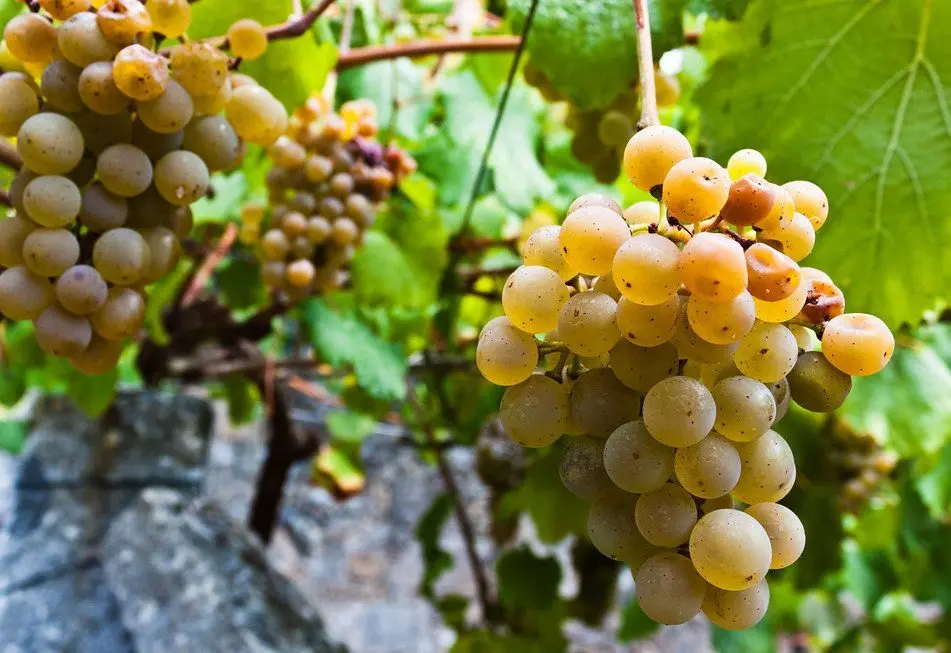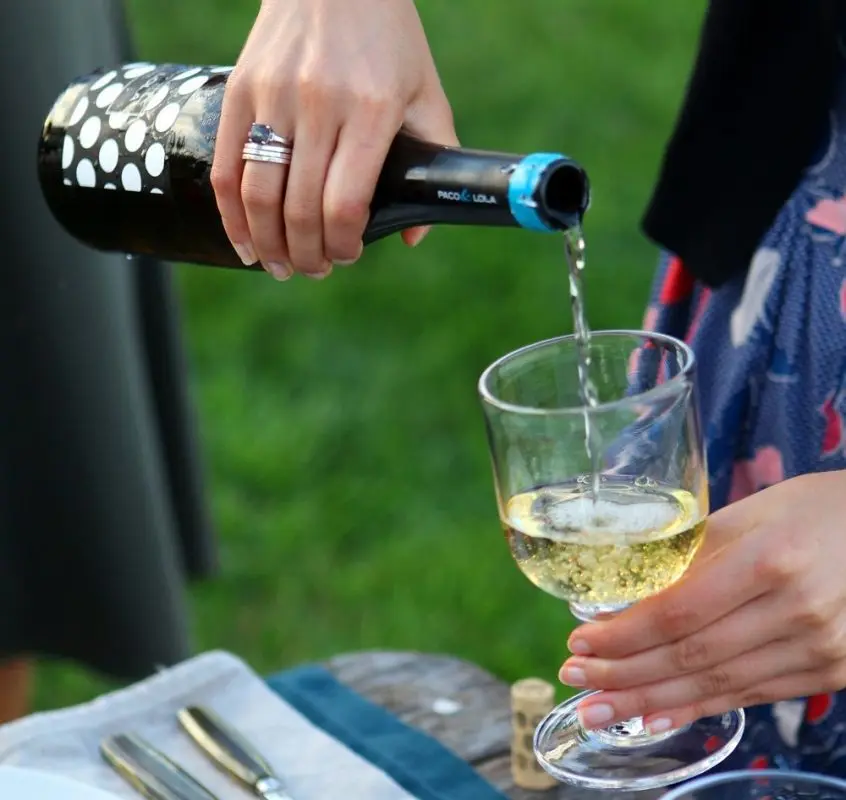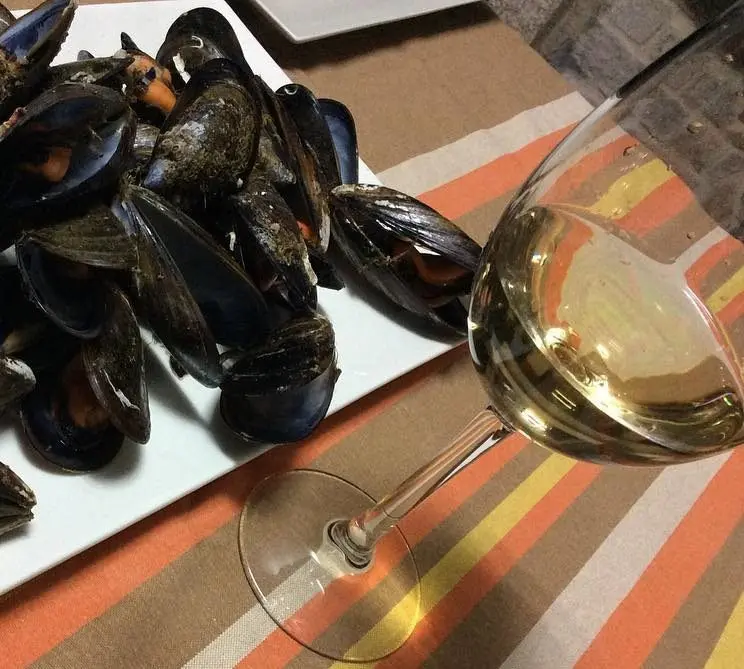Contents
Albariño (Alvarinho) is a light white wine native to the Iberian Peninsula. This is a refreshing drink with a rich fruity bouquet, salty notes and piercing sourness.
History
For a long time it was believed that the monks brought the grape variety of the same name to the Iberian Peninsula in the XNUMXth century. However, recent studies have proven that this is an autochthonous Galician grape.
The name of the variety comes from the Latin root albus – white, and translates as “whitish” or “white”.

Characteristics of Albariño wine
The drink has a light straw color and a deep aroma.
Main notes: lemon zest, grapefruit, honey melon, nectarine, salt, sometimes honeycomb. The taste is fresh, invigorating, with a bitter-sour finish. Usually Albariño wine is semi-dry, with a low content of tannins, but the highest possible acidity. The strength reaches 11.5-13.5%, that is, for white wine, the drink can be quite strong.
The variety does best in cool to temperate climates, while Albariño berries do not like excessive moisture, are easily infected with rot and prefer sandy and stony soils.

Production regions
- Rías Baixas, Spain. The name of this region is translated from Galician as “lowland rivers”, and indeed there are 4 rivers flowing here: Muros y Noia, Arousa, Pontevedra, Vigo. The taste of the local Albariño is dominated by notes of apricot, melon, peach, honeycomb and grapefruit. The region is divided into 5 zones:
- Ribeira do Ulla: The northernmost sub-region, with the most temperate climate and the most fruity wines.
- Val do Salnés: Albariño is believed to have originated here. Local wine is more salty and mineral.
- Soutomaior: the smallest sub-region, the wine is also brackish and mineral.
- Condado do Tea: This sub-region is furthest from the coast, clay soils predominate here, and the wine is bright and fruity.
- O Rosal: a sub-region on the very border with Portugal.
Wines from Rías Baixas must undergo strict quality control, and producers are also required to comply with the prescribed technology, not to exceed the permissible planting density of vines. Only under these conditions can a wine be labeled Rías Baixas on the label.
- Vinho Verde, Portugal. The wine is dominated by notes of honey melon, lime, lemon, honeycomb, grapefruit. The local Albariño is lighter than the Spanish one (it can be as low as 8.5% ABV), sometimes it is sparkling (fizzy, but less than sparkling wine).
In total, there are at least 2000 wineries specializing in this variety in this region. Albariño wine is rarely a single variety, it often contains admixtures of autochthonous grapes Loureiro, Avesso, Arinto, etc.
How to drink Albariño wine
Albariño is served chilled to 3-7 degrees Celsius in white wine glasses. This drink does not belong to the category of rare and / or noble wines and does not require any special manipulations before serving: it does not need to be allowed to “breathe”, etc. In the vinotheque, a closed bottle can be stored for up to 5 years.
This white wine goes well with any seafood, especially white fish. From meat, you can serve something lean or a bird to it. Good gastronomic pairings: soft or semi-hard cheese, feta, fresh vegetables or grilled vegetables, herbs.

Interesting Facts
- Albariño Day is celebrated on August 1st.
- Some of the oldest (and still bearing) vines in the world are Albariño, which can be up to 300 years old.
- This wine is mainly produced in two countries: Spain and Portugal, but small productions of Albariño can also be found in the USA, Argentina, Chile, Brazil, Australia and Uruguay.
- Traditionally, Albariño is a young wine, but modern producers sometimes age it in barrels, as a result of which the drink acquires notes of fresh pastries.
- The berries of the variety are quite small, but with a thick, dense skin. This is what gives the wine its characteristic bitterness and acidity.
- Albariño vines are grown on special trellises so that the plant does not come into contact with the ground and is exposed to moisture as little as possible.









